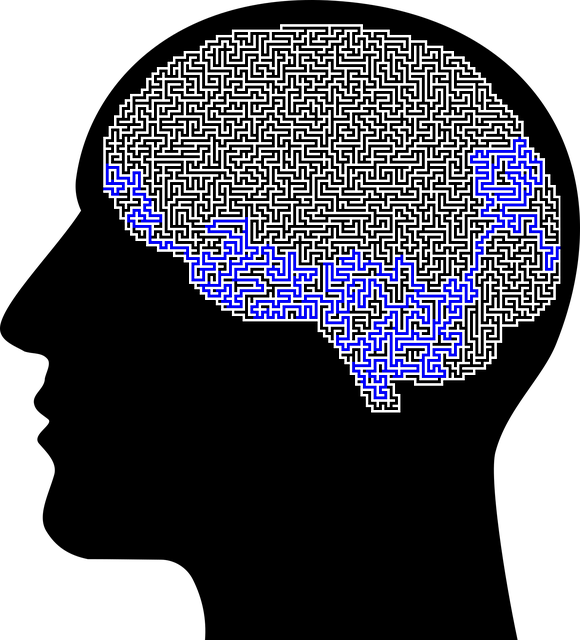Cultural Sensitivity in Mental Healthcare: Treating Northglenn Panic Disorder with Competent Practices
Cultural sensitivity in mental healthcare, especially for Northglenn Panic Disorder and Anxiety Atta…….
In today’s fast-paced world, mental health issues have become an increasingly prominent concern, with anxiety disorders affecting millions of individuals globally. Among these, panic disorder and anxiety attacks present significant challenges for those suffering from them. This article delves into the realm of Northglenn Panic Disorder and Anxiety Attacks Therapy (NPDAAAT), a specialized approach designed to tackle these specific mental health issues. We will explore its definition, historical evolution, global reach, economic implications, technological innovations, regulatory framework, challenges, successful case studies, and future potential. By providing an in-depth analysis, this article aims to offer valuable insights into NPDAAAT, empowering individuals, healthcare professionals, and policymakers to navigate and enhance the quality of care in managing panic disorder and anxiety attacks.
Northglenn Panic Disorder and Anxiety Attacks Therapy is a comprehensive therapeutic approach aimed at treating individuals diagnosed with panic disorder and related anxiety conditions. It involves a multi-faceted strategy combining various evidence-based techniques, such as cognitive-behavioral therapy (CBT), exposure therapy, relaxation training, and mindfulness practices. The primary goal is to help patients understand and manage their panic attacks, reduce anxiety symptoms, and improve overall quality of life.
The core components of NPDAAAT typically include:
The roots of NPDAAAT can be traced back to the early 20th century when psychoanalytic theories and behavioral approaches began to emerge as effective treatment modalities for anxiety disorders. Over time, these early foundations evolved into more structured therapeutic models. Cognitive-behavioral therapy, introduced in the 1960s, became a cornerstone of NPDAAAT due to its effectiveness in treating various mental health conditions, including panic disorder.
In the late 20th century, researchers and clinicians further refined exposure therapy, recognizing its potent role in managing fear and anxiety. This led to the development of more targeted interventions for panic attacks, forming a crucial component of NPDAAAT. The past few decades have seen a significant rise in the popularity and evidence base supporting this therapy, with numerous studies highlighting its effectiveness in improving patient outcomes.
Northglenn Panic Disorder and Anxiety Attacks Therapy has garnered worldwide recognition and adoption due to its proven success in treating panic disorder and anxiety attacks. According to a 2021 report by the World Health Organization (WHO), anxiety disorders are among the most prevalent mental health conditions globally, affecting approximately 450 million people. This widespread prevalence has driven the need for effective therapeutic interventions, making NPDAAAT a significant contributor to global mental health care.
The impact of NPDAAAT varies across different regions due to cultural, socioeconomic, and healthcare system differences:
The economic implications of NPDAAAT are multifaceted, considering both direct healthcare costs and indirect societal benefits:
NPDAAAT plays a vital role in economic systems by contributing to:
Technological advancements have significantly influenced the delivery and accessibility of NPDAAAT:
Technological innovations in NPDAAAT hold great promise for improving patient outcomes and expanding access:
The development and delivery of NPDAAAT are influenced by various policies and regulatory frameworks that vary across jurisdictions:
The policy and regulatory landscape has a significant impact on the following aspects of NPDAAAT:
Despite its proven effectiveness, NPDAAAT faces several challenges that hinder its widespread adoption and accessibility:
Addressing these challenges requires a multi-faceted approach:
The following case studies highlight successful applications of NPDAAAT, showcasing its transformative potential in individual lives and communities:
Case Study 1: Sarah’s Journey to Freedom from Panic Attacks
Sarah, a 32-year-old marketing professional, struggled with debilitating panic attacks that began after a high-stress work period. She sought help through a specialized NPDAAAT program offered at her local community mental health center. The therapy involved CBT, exposure therapy, and mindfulness training. Over several months, Sarah learned to identify and challenge her negative thoughts, gradually confronting situations that triggered her anxiety. With the support of her therapist and using relaxation techniques she learned, Sarah successfully reduced her panic attacks from multiple times a week to rare occurrences. She now feels empowered to manage her condition and has returned to work full-time.
Case Study 2: Community-Based NPDAAAT Program in Rural America
In a small rural town in the American Midwest, local healthcare providers collaborated to establish a community-based NPDAAAT program to address the region’s high rates of anxiety disorders. The initiative focused on training local mental health professionals and integrating technology to overcome accessibility challenges. Through online therapy sessions, mobile app support, and regular group meetings, individuals from all walks of life received access to evidence-based care. Within a year, the program reported significant improvements in patient outcomes, with many participants reducing their anxiety symptoms and enhancing their overall well-being.
Case Study 3: Virtual Reality Exposure Therapy for Phobias
A research team in Europe conducted a pilot study using virtual reality (VR) exposure therapy for individuals with specific phobias. Participants were exposed to controlled, yet realistic virtual environments tailored to their specific fears. The therapy was combined with traditional CBT techniques. Results showed substantial reductions in anxiety levels and improvements in quality of life for all participants. This case illustrates the potential of VR technology in delivering NPDAAAT, particularly for individuals who may find traditional exposure therapy daunting.
The future of NPDAAAT holds immense promise with several growth areas and emerging trends shaping its trajectory:
The global impact of NPDAAAT is expected to increase significantly in the coming years:
NPDAAAT represents a powerful tool in the global effort to combat panic disorder and anxiety attacks, contributing to improved lives and societies. Technological advancements, policy reforms, and cultural sensitivity have opened new avenues for delivering effective therapy while addressing accessibility challenges. As we look ahead, the future of NPDAAAT holds immense promise for transforming mental healthcare, ensuring that individuals worldwide can access the support they need to manage anxiety disorders and lead fulfilling lives.

Cultural sensitivity in mental healthcare, especially for Northglenn Panic Disorder and Anxiety Atta…….